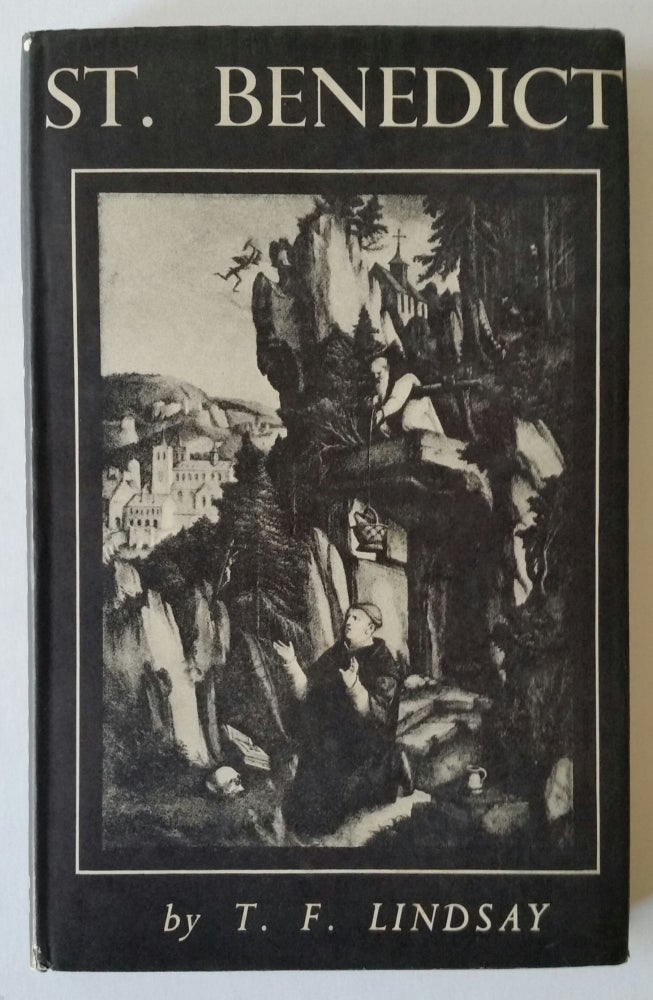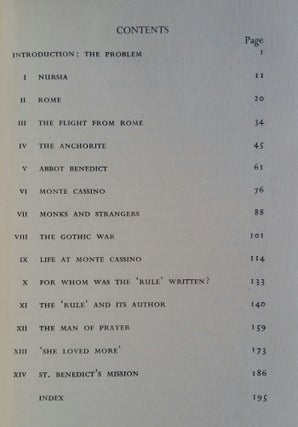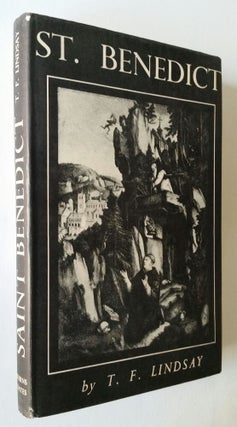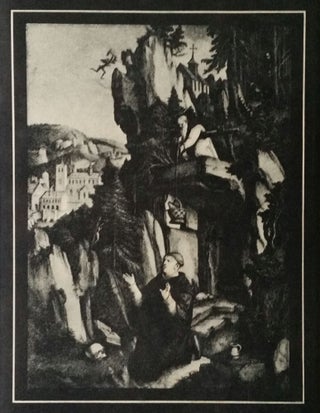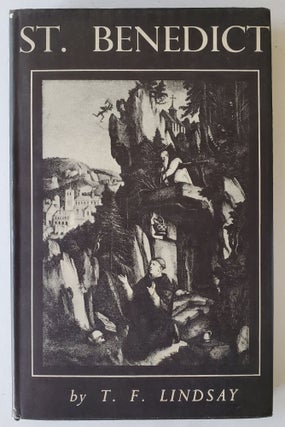Saint Benedict; His Life and Work
London: Burns Oates, 1949. First edition. Octavo, original black cloth, red top edge, original dust jacket. Very minor wear to edges of price-clipped dust jacket. A near-fine copy. Item #921
"SO CLEARLY DOES HIS ACHIEVEMENT STAND OUT FROM THE TURMOIL OF HIS AGE, THAT THE SIX FOLLOWING CENTURIES ARE KNOWN AS 'BENEDICTINE'"
First edition of this study of St. Benedict, his Rule, and the Benedictine order by an Oblate of St. Benedict. Inspired by the great English Benedictine tradition, Lindsay's biography of St. Benedict was the companion to his earlier book, The Holy Rule for Laymen (1947).
Much of what we know about Benedict of Nursia comes down to us from the hagiography of Pope St. Gregory's Dialogues. Lindsay, in his Introduction: The Problem, describes St. Benedict's unique role at a critical moment in the history of the West. "So clearly does his achievement stand out from the turmoil of his age, that the six following centuries are known as 'Benedictine.' The Institute which he founded became a tremendous force in the Church and State, converting, civilizing, unifying the peoples of Christendom, and containing within itself the social pattern of the new age." The author describes Benedict as a "man keenly alive to the temper of his age, the Roman of an older and more virile tradition, the man of sound sense, of humour, and of occasional gentle acerbity." The Rule is the defining element of the Order of St. Benedict and it sets the Benedictines apart from the later Orders of the Church. In contrast, "Other Orders make their appeal to the individual soul—the Dominican, by way of the intellect; the Franciscan, by the way of romance; the Jesuit, by the rousing challenge of knightly service. The Benedictine's appeal is always corporate."
The year 1947 marked the fourteenth centenary of St. Benedict's death. Lindsay concludes his book with commentary on Fulgens Radiatur ("Brilliantly Shines"), Pope Pius XII's encyclical on St. Benedict, motivated in part by the Holy Father's dismay over the wartime devastation of Monte Cassino, the original house of the Benedictine Order, built by St. Benedict himself around 529. With the original dust jacket, with striking illustration "taken from a painting by Meister von Messkirch in the gallery at Stuttgart." Approbations.
Price: $50.00

